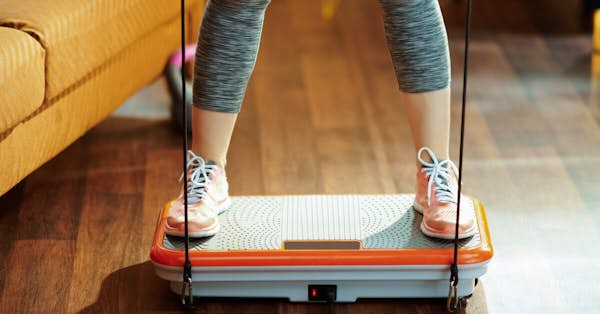
That's fine for the younger generation, but the body may not be able to produce a higher temperature in older people, who are by far the generation most at risk of the coronavirus.
What's more, a “normal” temperature can vary by quite a wide margin. Plus, the variations often depend on what part of the body is used to measure body temperature.
But maybe the biggest surprise is that the textbook “normal” body temperature of 98.6º F has become obsolete. I’m not sure whether this is common knowledge yet. I suspect a lot of people don’t know it...
In medical school doctors learn that humans have a core body temperature of 98.6º F, a standard set way back in 1868.
Over the last hundred plus years, medical research has revealed that we’re all individuals with natural variations in heart beat, blood pressure, organ size, hormone output, hair growth, height, and just about every other variable we can think of.
Yet, the idea that 98.6º F is “normal” temperature hasn’t changed. And now, more than six decades of studies suggest it’s about time it did.
We’re Getting Cooler
In 1992, a review of 27 studies from 1935 to 1999 found that average normal temperatures were lower than 98.6º F. Astonishingly, normal readings taken via the rectum, which is the most accurate method, varied from 93.92º F to100.04º F.
In my view, that pretty much shreds the idea that we’re going to learn whether we’re COVID-free by temperature-taking. At best, it’s a rough indicator.
For instance, if your normal temperature is 96º F, a reading of 99º F may mean you’ve got an infection, and you’re probably going to miss it if you don’t know your “personal normal” is low.
In 2017, the range in readings for 35,488 patients was 95.54º F to 99.86º F, with an average of 97.88º F.
Earlier this year a much bigger and more comprehensive study was published.
Researchers examined records of Americans from three time periods: Army veterans between the years of 1862 and 1930; a representative sample of the U.S. population from 1971 to 1975; and a database of patients between 2007 and 2017.
From the 677,423 measurements taken, the researchers found that men born in the early to mid-1990s had an average temperature that was 1.06º F lower than that of men born in the early 1800s. For women born in the 1990s, it was 0.58º F lower than those born in the 1890s.
"Our temperature’s not what people think it is," said Julie Parsonnet, MD, a professor of medicine at Stanford University, who led the study. "What everybody grew up learning, which is that our normal temperature is 98.6º F, is wrong."
This was true back in the 19th century, but today, temperatures are even lower, averaging 97.5º F.
Metabolic Rates are Lower
The researchers investigated whether this drop in temperature could be caused by improvements in thermometer technology, but they believe this doesn’t account for the change.Instead, they were confident that human body temperatures have actually fallen over the last 200 years. That’s amazing.
The authors said a reduction in the rate of energy expenditure -- the metabolic rate -- could explain the cooling trend.
Improvements in hygiene, availability of food, standard of living and medical treatments have led to a decline in body inflammation that revs up metabolism and temperature. I suspect that chronic infections of various kinds – TB, for example – were much more common in the 19th and early 20th centuries. In fact, we know they were.
A more constant environment, thanks to air conditioning and central heating, also contributes to a lower metabolic rate. I would add that we don’t do nearly as much manual labor, which warms you up, as most of us can testify.
"The environment that we’re living in has changed, including the temperature in our homes, our contact with microorganisms and the food that we have access to," Dr. Parsonnet explained.
"All these things mean that although we think of human beings as if we’re monomorphic and have been the same for all of human evolution, we’re not the same. We’re actually changing physiologically."
How to Find Your Own Baseline Temperature
There are many influences on body temperature that have nothing to do with health or sickness.In fact, it’s normal for body temperature to fluctuate naturally by 0.9 degrees over the course of the day. It's lowest between 3 am and 5 am and highest between 4 pm and 6 pm.
What’s more, a man's temperature is typically 0.3 degrees lower than a woman's temperature. A woman’s temperature can also vary significantly during her menstrual cycle.
There’s more: body temperature for both men and women falls with aging; the difference between the oldest and youngest adults in one study being 0.3 degrees.
Other variables affect both genders. One of them is the season of the year. Summer months are linked to lower body temperature and winter months to higher body temperature. There are also variations in obesity and disease, so people need to find their own individual core body temperature by taking a series of measurements and not rely on the old standard of 98.6º F.
Where You Take Your Temperature Matters
Where the measurement is taken is also relevant. As I mentioned, readings taken from the rectum are the most accurate, but those taken from the mouth or ear are a close second best, while under the arm or forehead strips are just plain unreliable (fair warning to all those employers who are using the forehead scans to detect fever).Those checking for coronavirus should also be aware, according to Dr. Patricia Macnair, a specialist in aging in the United Kingdom, that temperatures can spike on and off in infected people. As a result, it's best to take three or four measurements throughout the day.
When temperature rises to 100.4º F it's defined as a fever. But Dr. Macnair also warns that older people with an infection may not develop a fever because the immune system is weaker and less able to induce a strong response.
"This means you shouldn’t rely on the presence of a high temperature as the only sign of infection, and people should pay extra attention to other symptoms such as pain, cough or breathlessness — and unusual levels of confusion."
I would not say temperature is worthless as an indicator of coronavirus infection, but we have to weigh it in a complicated context, and I’ll venture a guess that busy laypeople don’t have the knowledge to do that.
And I would say it’s useful if your temperature is obviously over the top. If you come in at, say, 102º F or 103º F, you should assume you’ve got a problem. It’s the marginal reading of 99º F or so that can be ambiguous.



